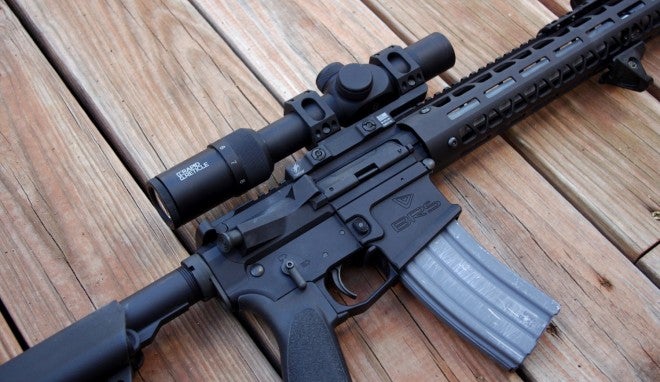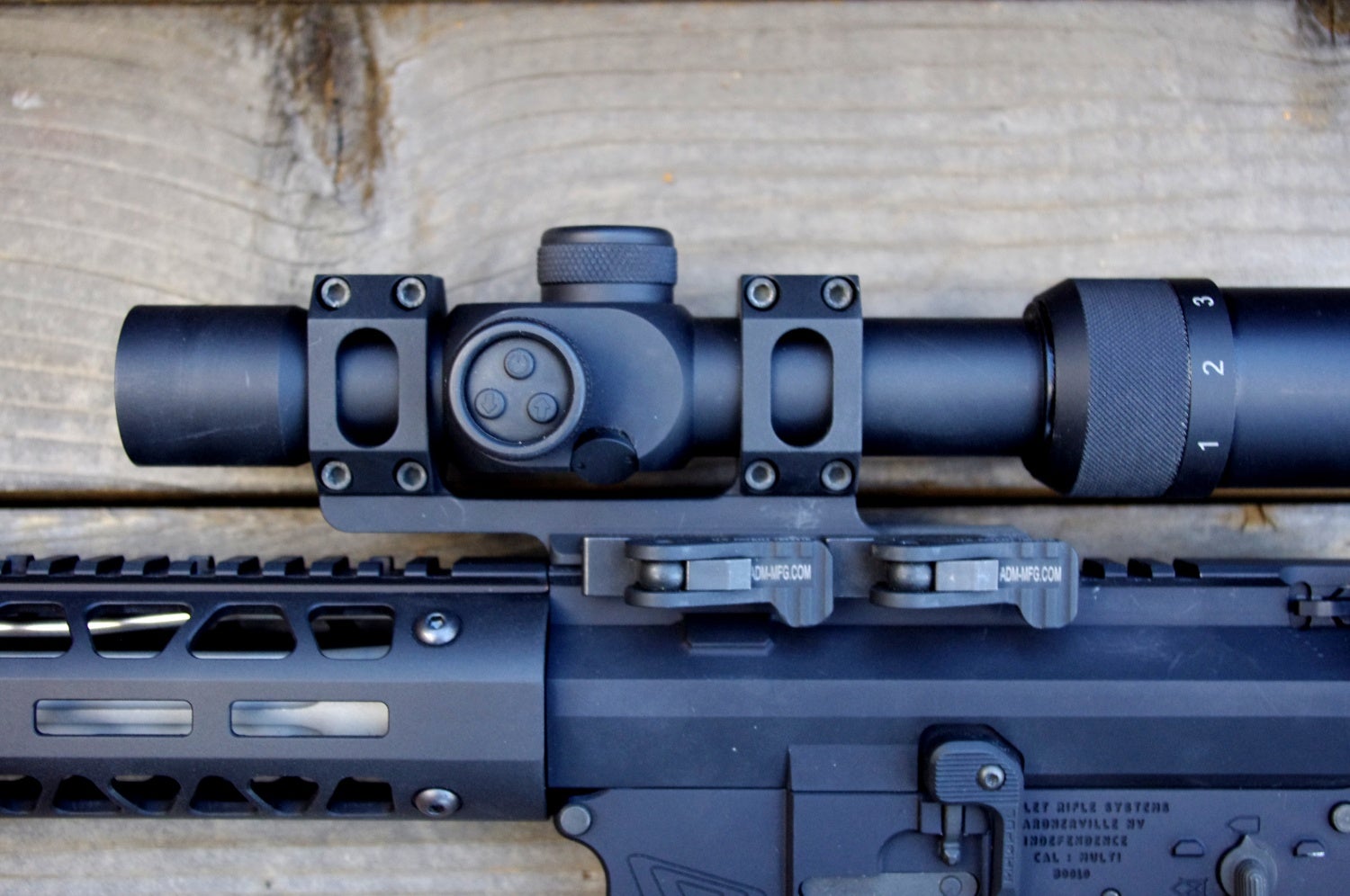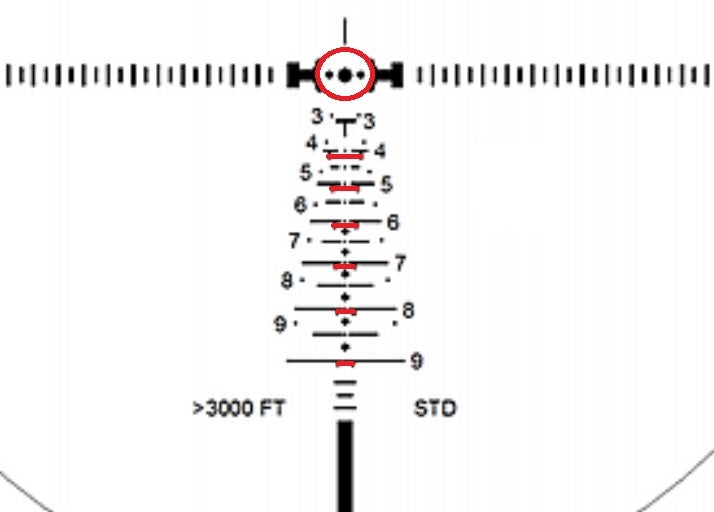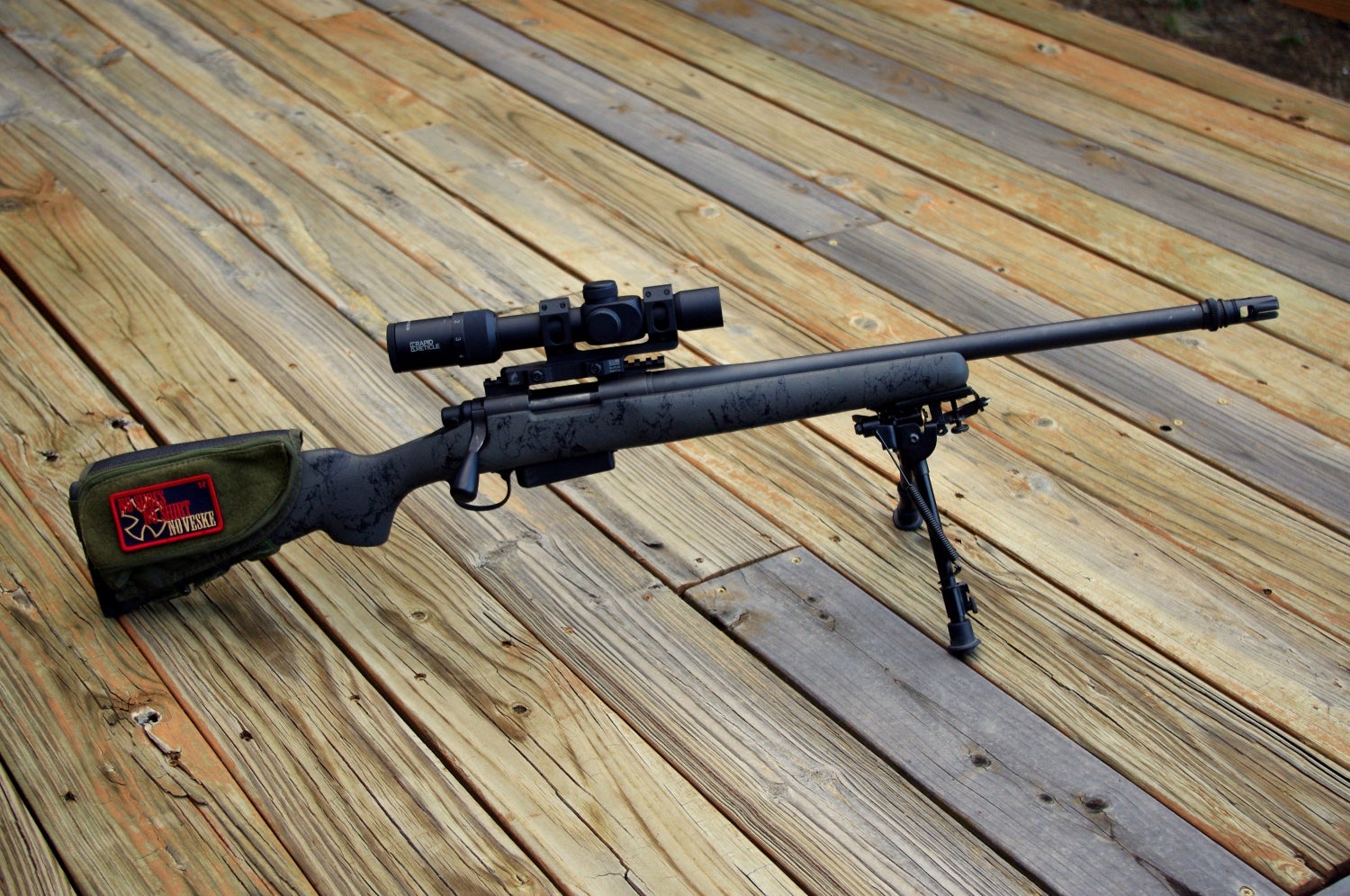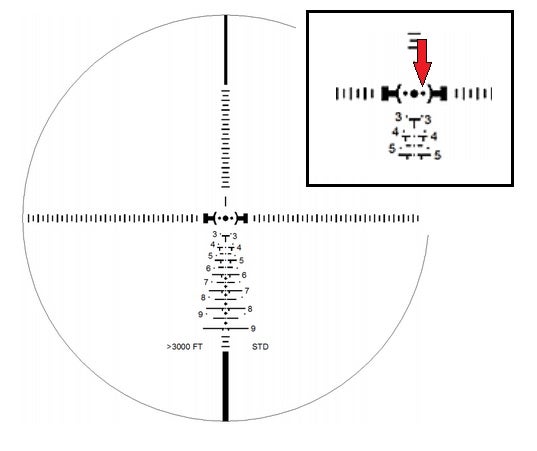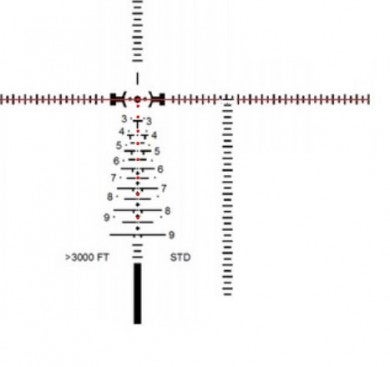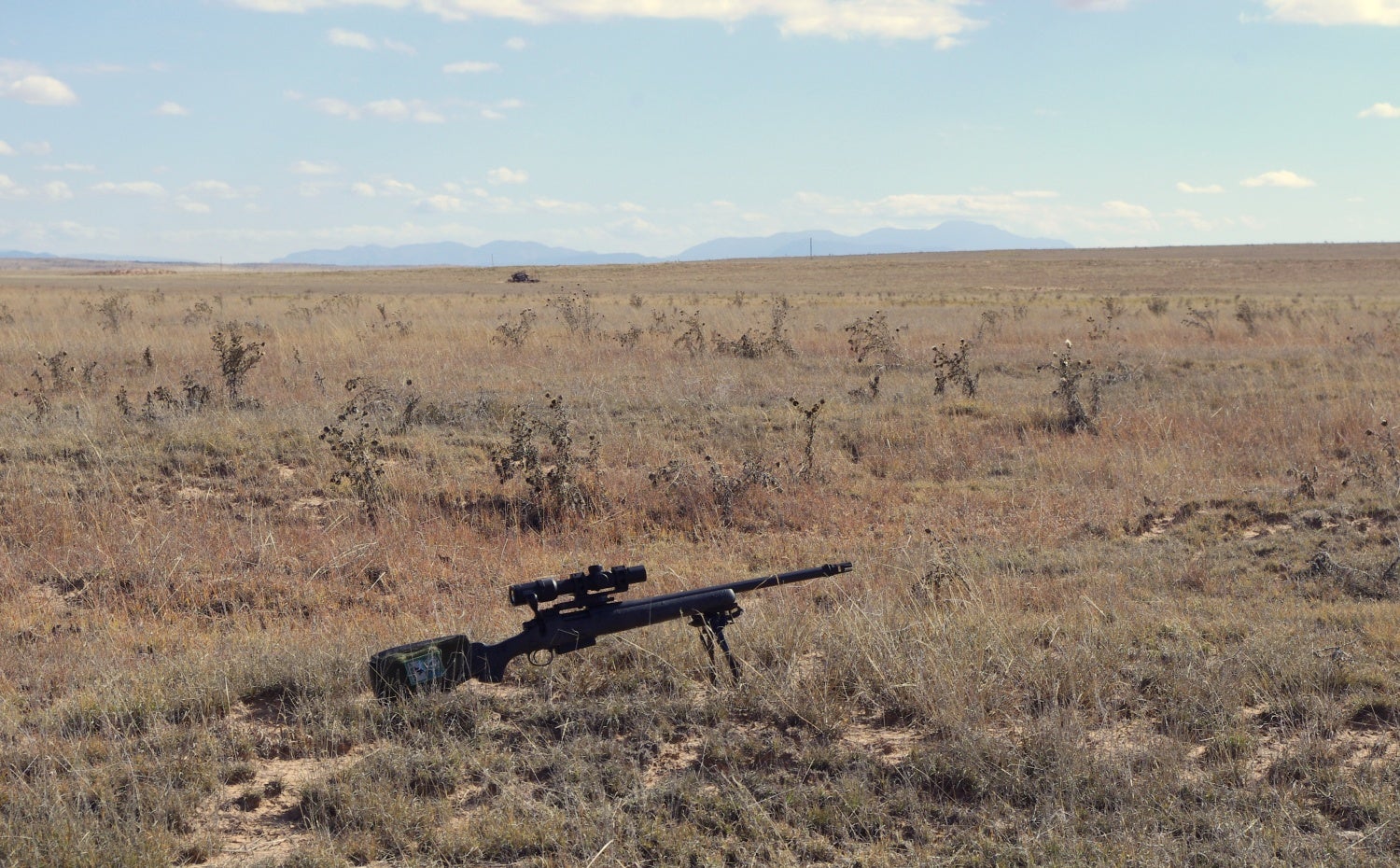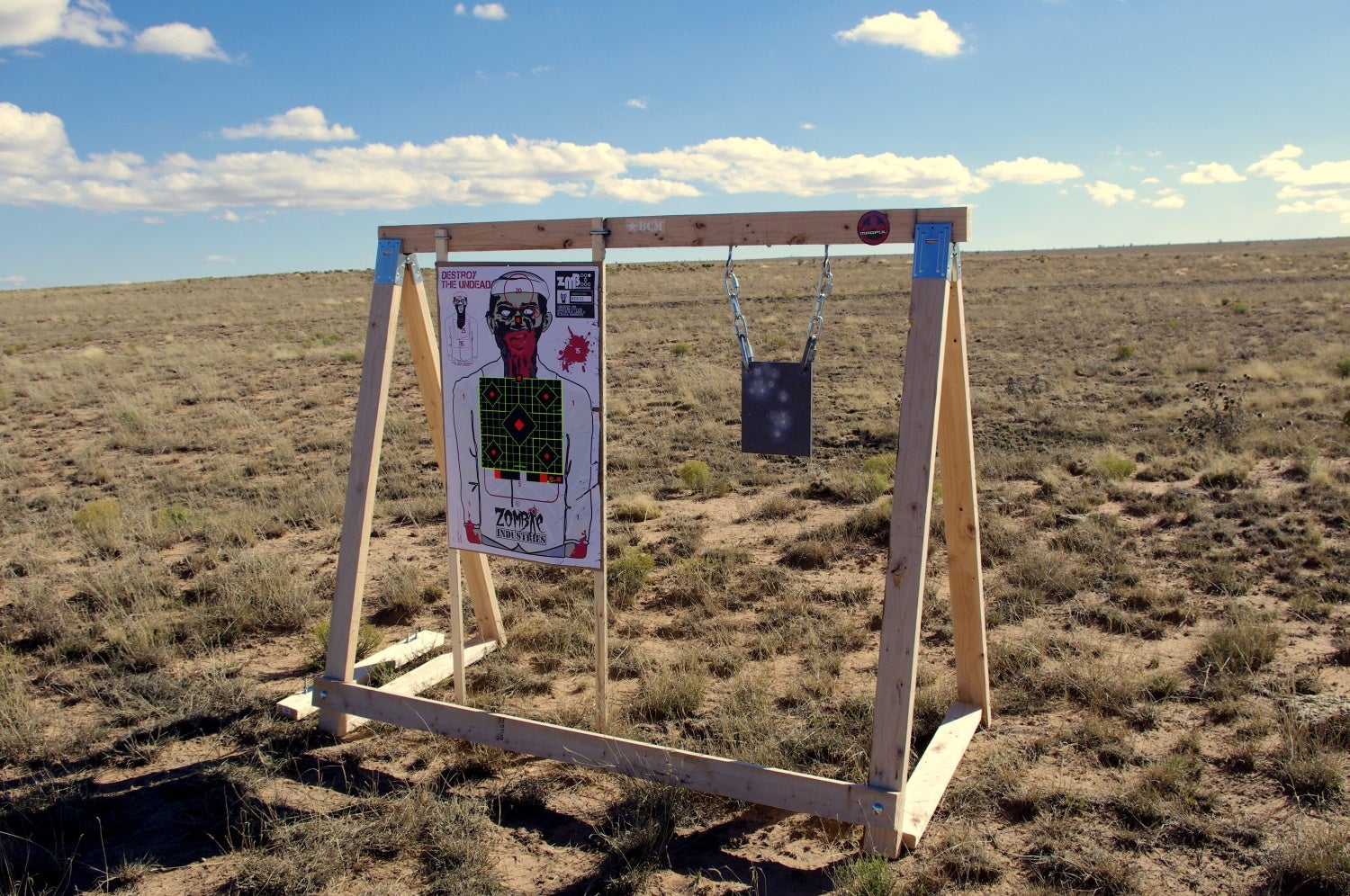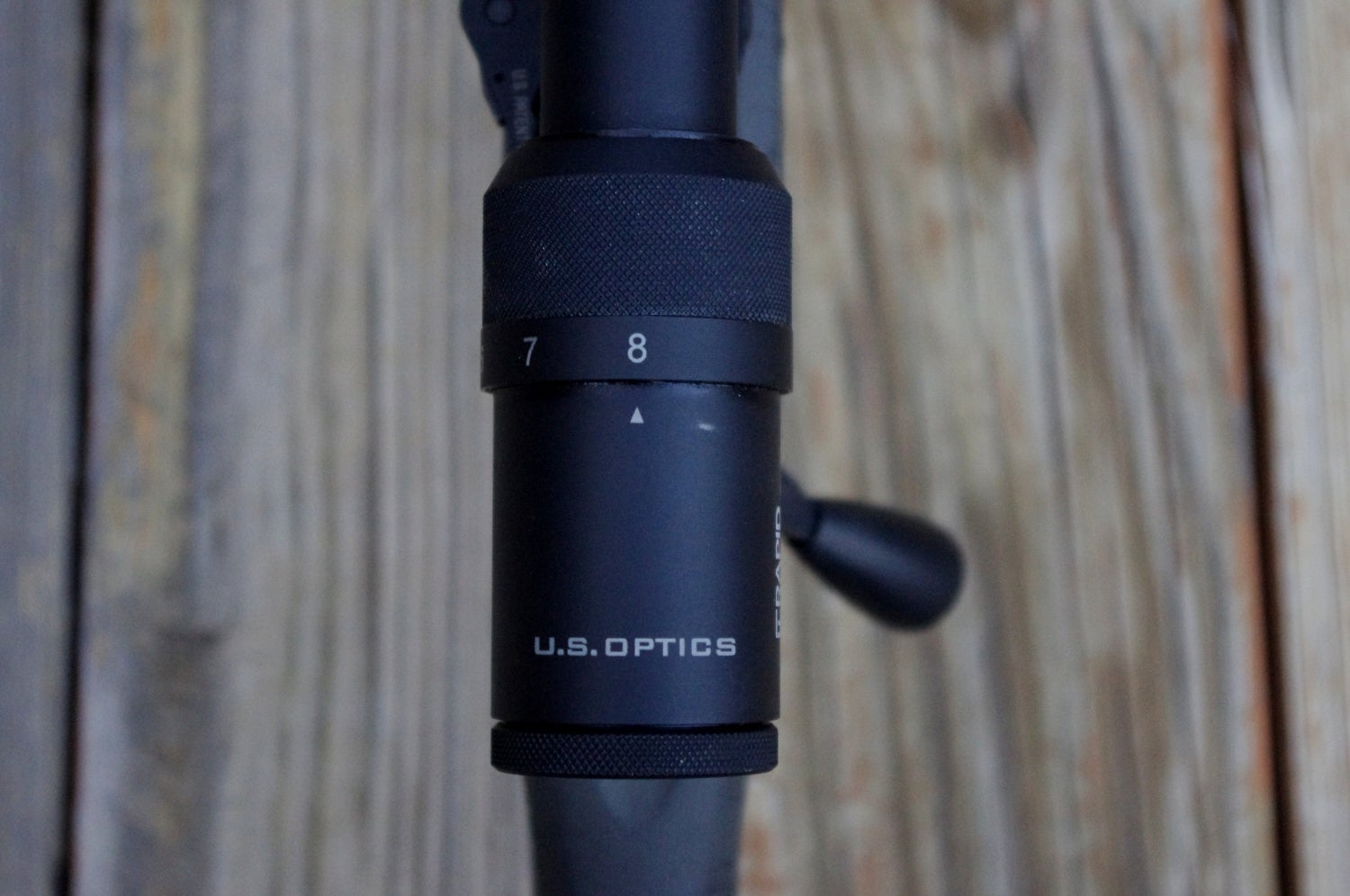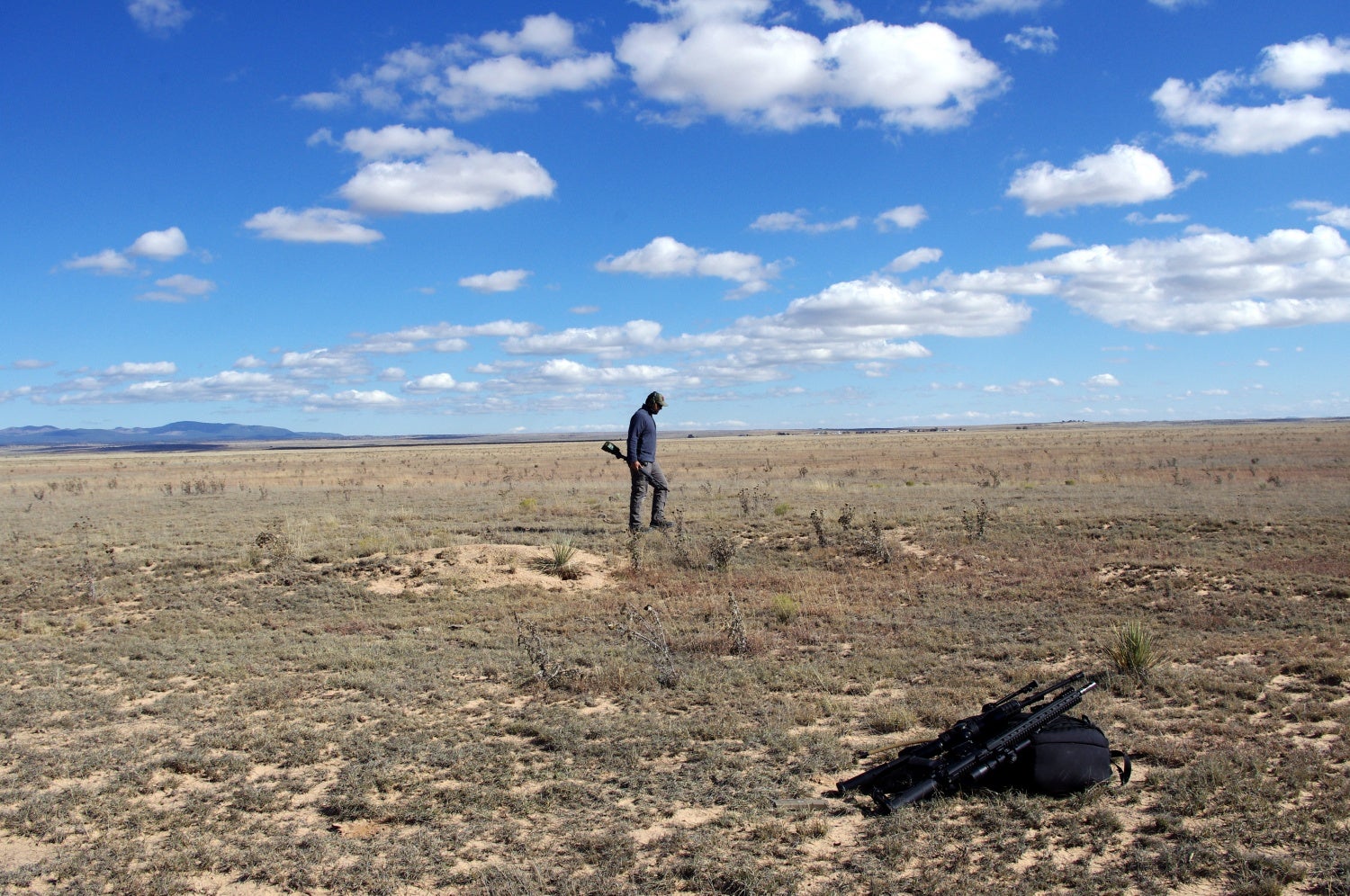Pride Fowler Industries and US Optics recently teamed up to offer the US Optics Military Spec series of rifle scopes. The US Optics Military Spec rifle scopes mate a PFI Rapid Reticle with a US Optics SR-8 or SR-6 rifle scope. The US Optics series encompasses two models: the 300BLK SR-6, which features the 300BLK ballistic reticle calibrated for 300 AAC/Blackout, and the USO-PFI 762C SR-8S, which features the 762C Adaptive Combat reticle calibrated for the 7.62×51 cartridge. For testing purposes, The Firearm Blog was provided with the USO-PFI 762C SR-8S model.
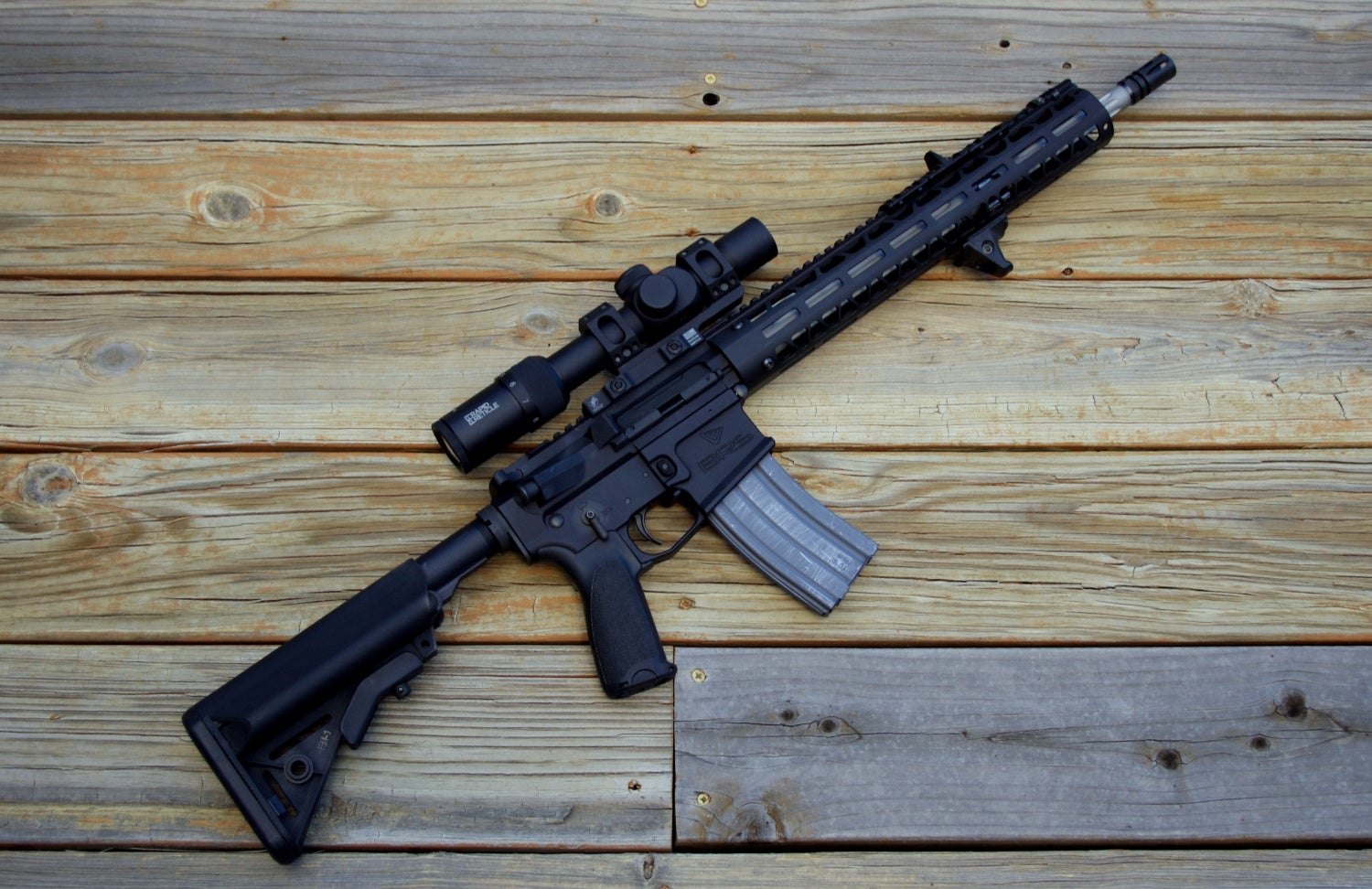
The USO-PFI 762C Rifle Scope. The USO-PFI 762C mates a US Optics SR-8S with Pride Fowler Industries 762C Adaptive Combat Reticle. The USO-PFI 762C is sitting atop my Billet Rifle Systems Ar-15. The rifle pictured is extremely accurate and perfect for precision work.
Key Specifications of the USO-PFI 762C SR-8S model include:
- The USO-PFI 762C rifle scope has Pride Fowler Industries 762C Adaptive Combat Reticle.
- The USO-PFI 762C is a 1-8 power, First Focal Plane scope. (On First Focal Plane scopes, the reticle will shrink down or increase in size as the magnification is dialed down, or dialed up.)
- The USO-PFI 762C main body is a US Optics SR-8. The main tube is 30 mm, and features a 24 mm objective lens. The 762C is 12 inches long, weighs 1.5 lbs and has a 3.7 inches of eye relief. The scope is made out of 6061 T6 Type III hard coat anodized aluminum.
- The USO-PFI 762C has a fixed parallax and an illuminated reticle. Scope adjustments are 1/2 MOA. ( 1 MOA equals 1.047 inches at 100 yards. 1/2 MOA = .52 inches at 100 yards).
- The USO-PFI 762C was designed for M118LR shot through a 16 inch barrel. (Muzzle velocity of 2440 feet per second. G7 Ballistic Coefficient of .485 – .505)
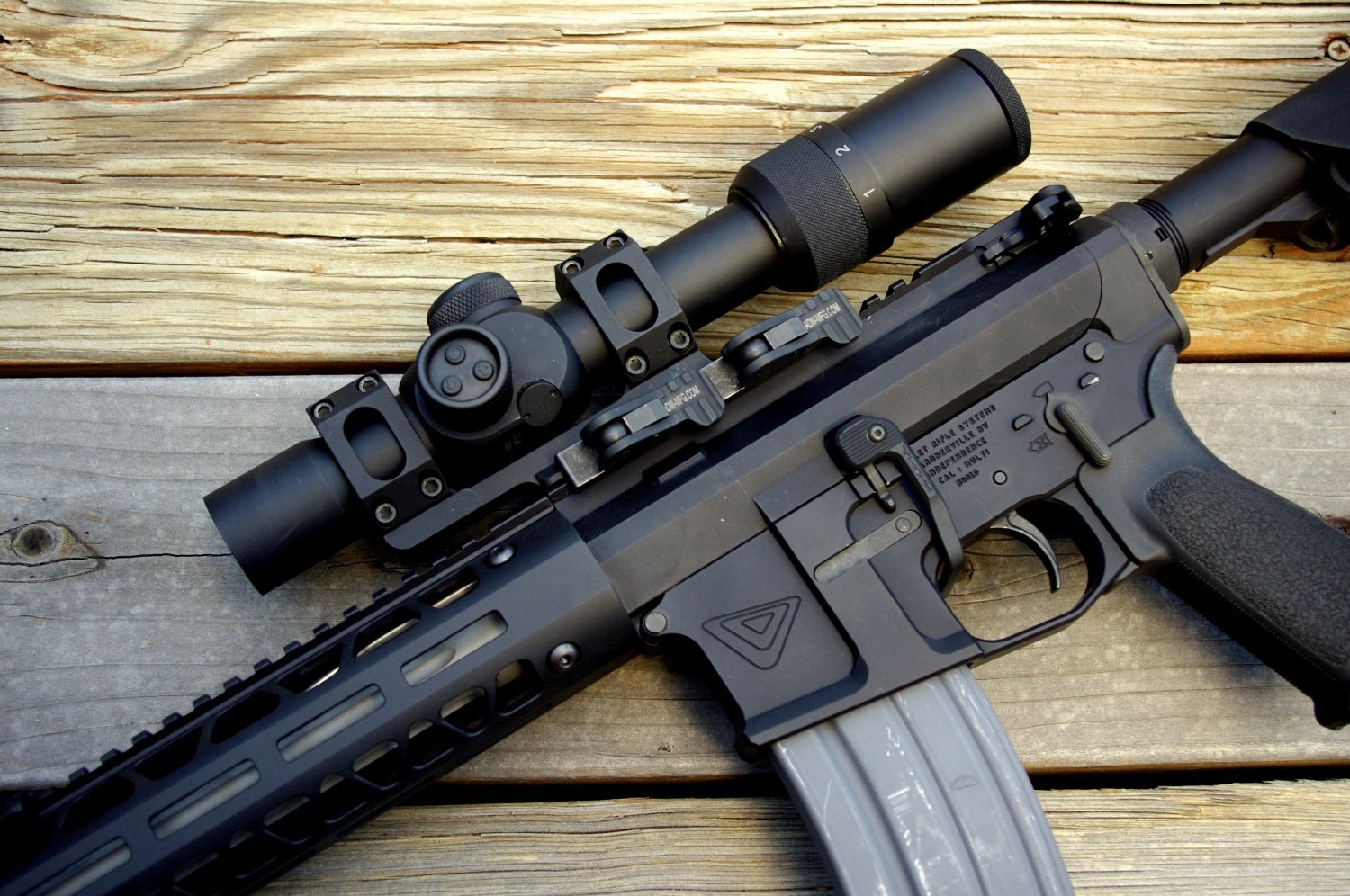
USO-PFI 762C Rifle Scope came mounted on an American Defense scope mount. The US Optics SR-8 is an amazing piece of hardware. Visible in this picture are the buttons to turn on the illuminated reticle, as well as increase or decrease the reticle intensity. The illuminated reticle was not daylight visible. (Yes, I did try different batteries)
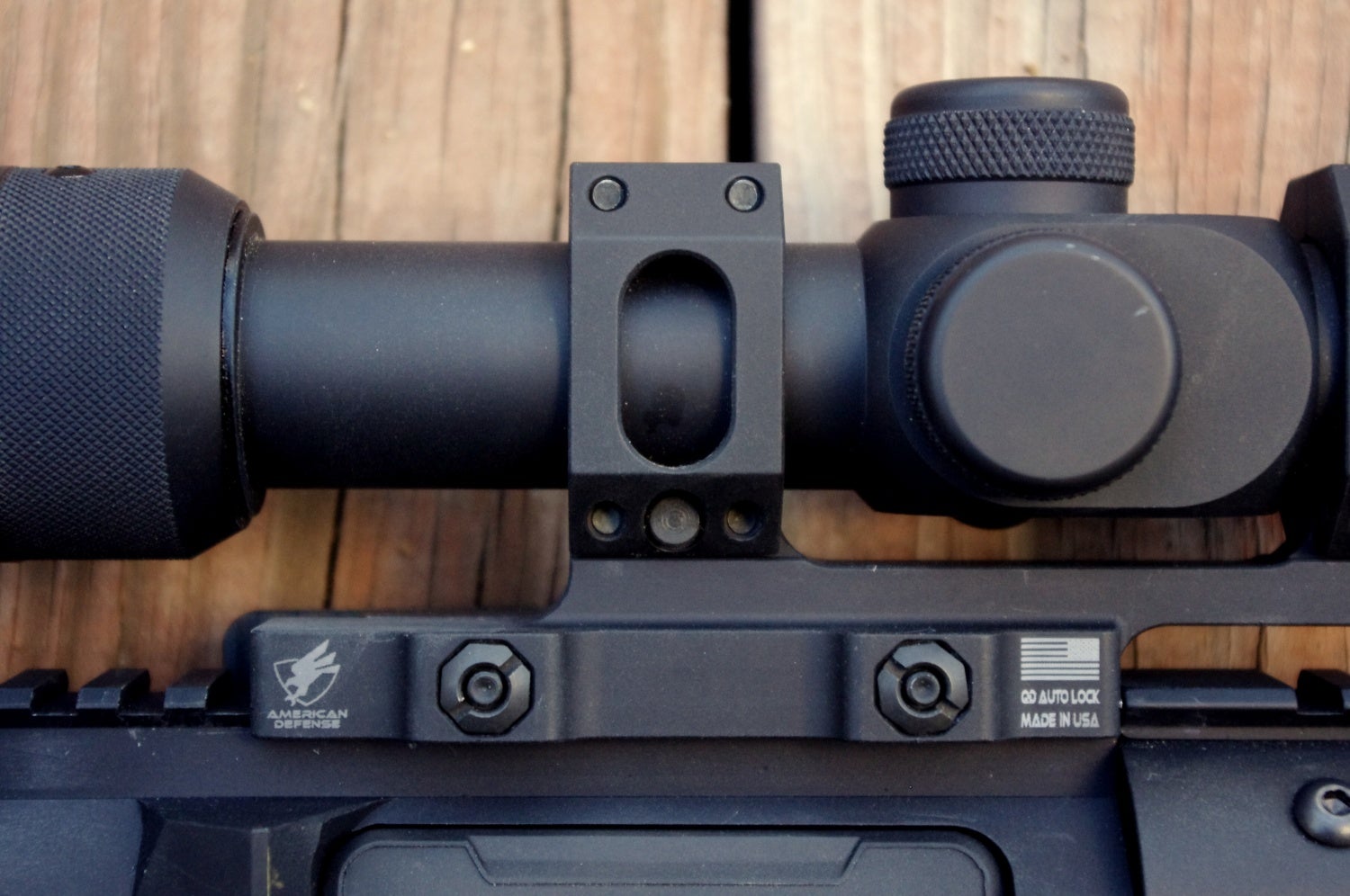
American Defense makes a very solid mounting platform. I had no problems with this mount. Unlike my LaRue mount, this mount does not require tools to adjust the quick detach levers.
Understanding the 762C Adaptive Combat Reticle
The 762C Advanced Combat Reticle is a ballistic reticle that is configured to shoot M118LR/175 grain, 7.62×51 bullets. Pride Fowler Industries developed the reticle for battle rifles with a 16 inch barrel, notably the LaRue OBR 7.62, LMT .308 and the FNH SCAR 17S. The reticle offers ranging capability, wind holds and takes into account elevation. Pictured below is the 762C Advanced Combat Reticle.
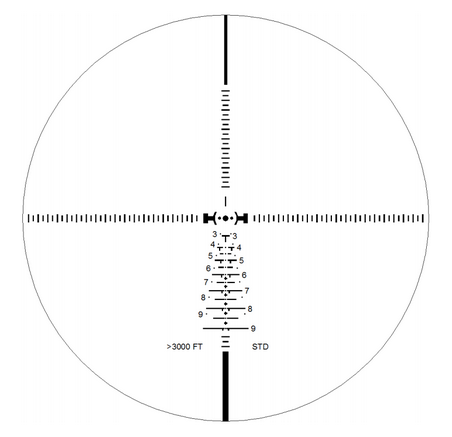 On the reticle you will notice “>3000 FT” on the left side and “STD” on the right.If a marksman was using the M118LR round as well as a battle rifle with a 16 inch barrel, based off the marksman elevation, he or she would use the numeric hold on the left for shots above 3000 feet, and the numeric holds on the right, for shots below 3000 feet. The small dots near the numbers are for 10 mph wind holds
On the reticle you will notice “>3000 FT” on the left side and “STD” on the right.If a marksman was using the M118LR round as well as a battle rifle with a 16 inch barrel, based off the marksman elevation, he or she would use the numeric hold on the left for shots above 3000 feet, and the numeric holds on the right, for shots below 3000 feet. The small dots near the numbers are for 10 mph wind holds
Ranging with the 762C Adaptive Combat Reticle
The 762C Advanced Combat Reticle features Pride Fowler Industries Rapid Ranging feature. The picture below is a “photo shopped” picture of the 762 Adaptive Combat Reticle. For ranging a human being at 100 yards, the shooter would use the brackets on the center of the reticle. If a targets head filled the circled area, the target would be 100 yards away. If the targets head filled half that space, the target would be 200 yards away. If a target’s head, filled the “T” between the 3’s, the target would be 300 yards away. The red dashed lines I drew, represent 18 inches at 400, 500, 600, 700, 800 and 900 yards. Assuming your targets shoulder width is 18 inches, using this feature would give you their range. The 762C Adaptive Combat Reticle also has MIL based hash marks for more conventional ranging.
Establishing a good zero
For the 762C Advanced Combat Reticle to work properly, the scope must have a good zero. When compared to a ruler placed at 100 yards, the center dot measured about 2.25 inches. 2.25 inches is not a very fine reference point when trying to zero an optic. For zeroing, I zeroed on the mini dot to the right of the main dot. After getting a good zero, I made 1 click to the left and confirmed a 3 shot 1.25 MOA group.
Working with the 762C Reticle
Prior to live fire testing, I had Pride Fowler send me some pictures of the 762C Adaptive Combat Reticle. Using some photo editing software, I photo edited some mil hash marks, and placed the hash marks alongside the 762C reticle. Since I was not using a 16 inch battle rifle, nor M118LR, I did not expect the drops to work for my rifle/caliber combination.
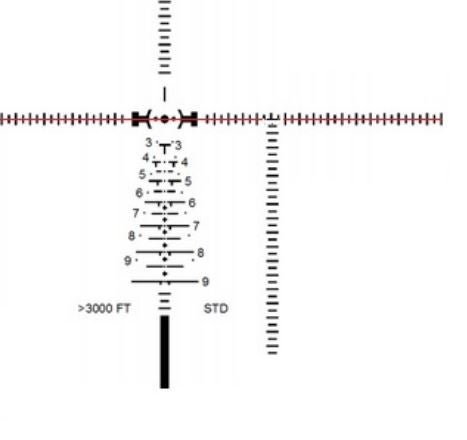
If you are a shooter that is using the USO-PFI 762C, feel free to save this image to your desktop and print it up for your shooting journal/DOPE book.
Since the 762C Adaptive Combat Reticle was designed for a 16 inch battle rifle paired with 175 grain M118LR I started to build a simulation to test my photo shopped hash marks as well as the reticle. M118LR has a G7 ballistic coefficient of .485 – .505 and is going to be leaving a 16 inch barrel around 2400 feet per second. Plugging values into my calculator I came up with the following holds. As you can see from the picture below, the hold values matched the reticle pretty close.
- 100 Yards – 0.0 MIL Hold
- 200 Yards – 0.6 MIL Hold
- 300 Yards – 1.5 MIL Hold
- 400 Yards – 2.6 MIL Hold
- 500 Yards – 3.7 MIL Hold
- 600 Yards – 5.0 MIL Hold
- 700 Yards – 6.5 MIL Hold
- 800 Yards – 8.1 MIL Hold
- 900 Yards – 9.8 MIL Hold
(100 yard zero. Altitude 6200 feet. 29.92 InHG. Temperature 45.0 F. No Angle. M118LR 175. G7 BC .505)
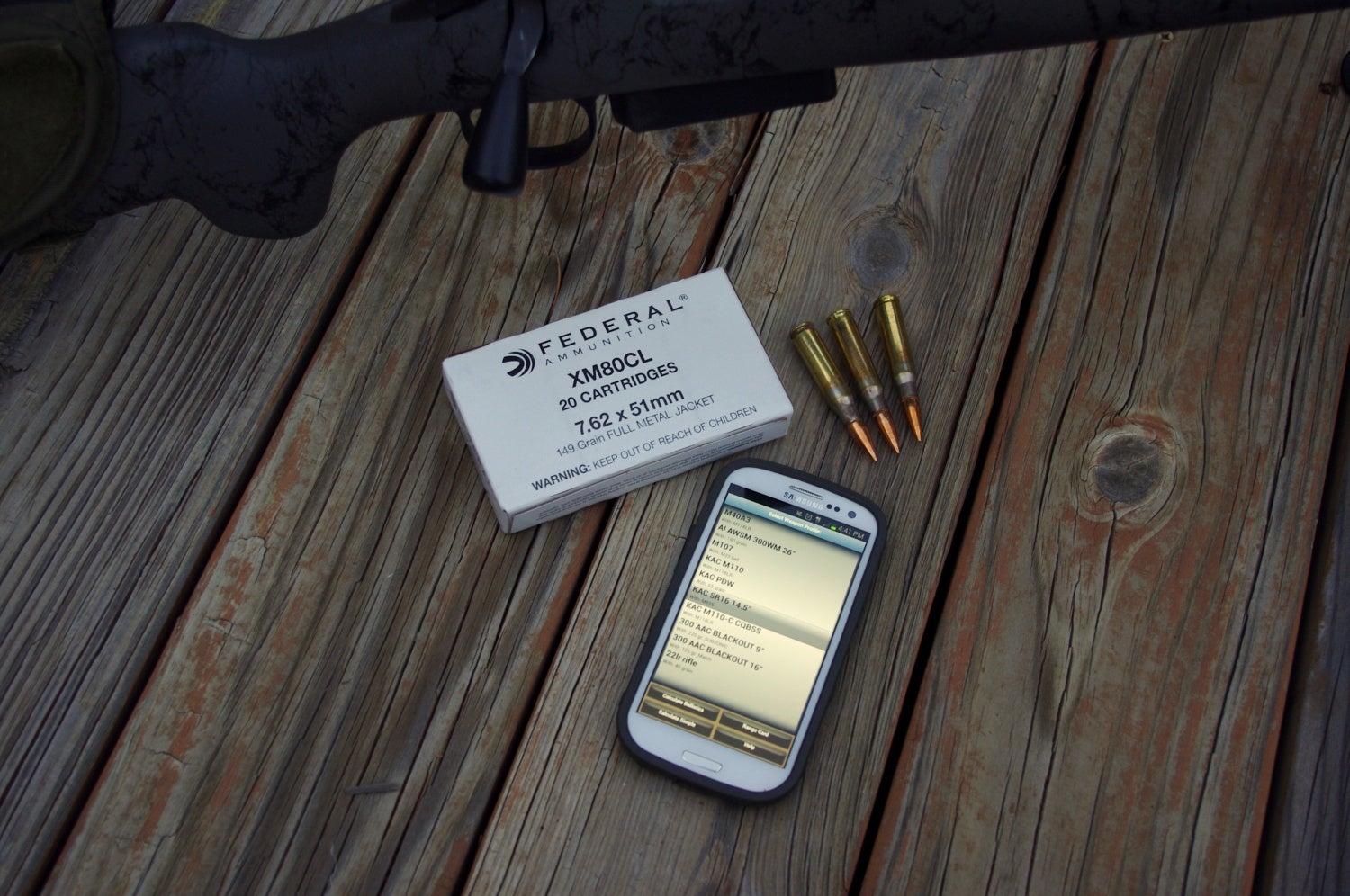
For testing I used Federal XM80. Federal XM80 is a 149 grain full metal jacket boat tail round. For Ballistic calculations I used Knights Armament’s Bulletflight.
Field Testing
Field testing was done at the family ranch. The ranch sits at 6200 hundred foot elevation. I was shooting south, and there were 8-10 mph gusts of wind coming from the 2 o’clock position. I was not shooting at an angle. Temperature was around 45 degrees Fahrenheit, and pressure was 29.04 InHG. Zeroing was done at 100 yards on a Shoot-N-C target. My target for actual testing would be an 8×10 inch steel plate. For testing I moved back in 100 yard increments. Though I do not own a 16 inch battle rifle, nor was I shooting M118LR, I was still excited to field test the USO-PFI 762C rifle scope. For testing I used my Remington 700 SPS tactical and Federal 149 Grain M80. The 762C Adaptive Combat Reticle is calibrated for a projectile flying at 2440 feet per second and a G7 ballistic coefficient between .485 – .505. Using Knights Armament Bulletflight and my photo shopped reticle, I came up with the following holds.
- 100 Yards – 0.0 MIL Hold
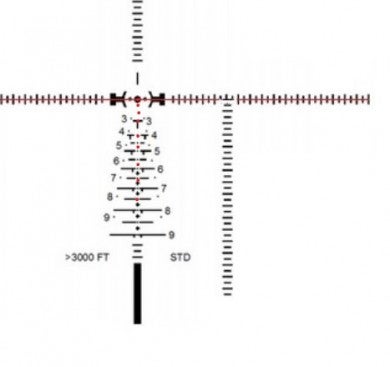
- 200 Yards – 0.5 MIL Hold
- 300 Yards – 1.2 MIL Hold
- 400 Yards – 2.1 MIL Hold
- 500 Yards – 3.1 MIL Hold
- 600 Yards – 4.2 MIL Hold
- 700 Yards – 5.5 MIL Hold
- 800 Yards – 6.9 MIL Hold
- 900 Yards – 8.6 MIL Hold
After establishing a good zero, I started working back in 100 yard increments. My calculated holds held true. During testing, the scope was constantly on 8 power and I was using the tiny dots on the reticle to hold for wind. Shooting to 400 yards was very easy. The 500 and 600 yard shots were difficult due to the reticle obscuring my view of the target. My saving grace was wind. Because I had to hold for 8-10 mile per hour gusts, I was using the small circles that are calibrated for 10 mile per hour wind holds. The dots, being very small, allowed me to clearly see my target and make multiple hits out to 600 yards. Since I was shooting a heavy, muzzle braked rifle in the prone position with a heavy load on the bipod, I had no problems calling and observing my shots. Past 600 yards it was very difficult to see the 8×10 inch steel plate. I could still make out the human silhouette target that was setup next to the plate, but observing hits would have been impossible,
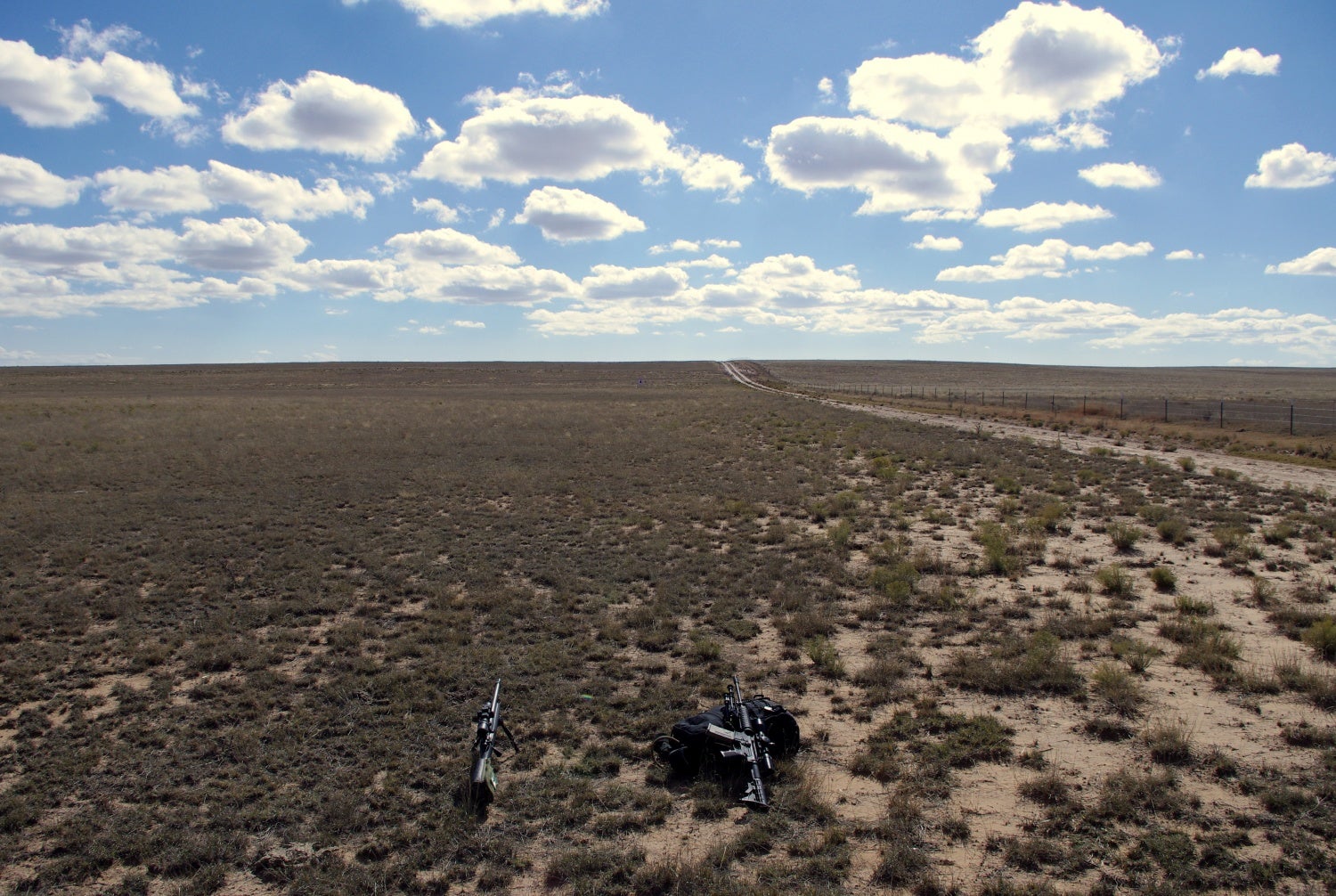
The furthest I took the USO-PFI 762C out to was 600 yards. As a personal challenge, I only shot at the steel target.
After three range sessions, 40 rounds of M80, and 20 rounds of XM193 I came to the following conclusions:
- Since this rifle scope is only a 1-8 power, I would have preferred a Second Focal Plane reticle. The center dot would have been a lot more visible on 1 power.
- The illuminated reticle is not visible during daytime.
- On 1X, the cross hair is not visible. The reticle looks like a fuzzy mess and does not lend itself to close range precision shooting. If the reticle were in Second Focal Plane, the center dot would be visible and extremely useful, especially illuminated.
- The eye relief is adequate for long range shooting. Had the reticle been visible at 1X, I could probably shoot an El Presidente drill just as fast as I can with a red dot.
- The 762C combat reticle does not lend itself to precision work. This scope is designed to “walk rounds on target.”
- This scope is designed to engage human sized targets.
- I would not hunt dangerous animals that charge or pounce with this scope. The reticle is worthless on 1x.
- My El Presidente drills were faster on 3x then 1x.
- Observing and calling shots at 600 yards was very easy when the scope was on 8x.
- US Optics makes a very good scope. The glass was very clear.
- The American Defense scope mount was an amazing piece of hardware. I would strongly look at that brand for a mount.
Final thoughts
I am not a fan of ballistic reticles. I like the concept of the 762C Combat reticle but I would prefer something analogous to the Horus series of reticles, or even a simple cross hair with MIL or MOA hash marks. Reticles in general are a personal preference. Typically what you put in is what you get out. One could make the 762C Combat reticle work with any caliber, but it would require a technical marksman as well as A LOT of time both plugging values into a ballistic calculator and confirming on the range. If you like to shoot, observe splash, adjust, and then shoot until you hit your target this scope will work just fine. The Horus series of Reticles also compliments that style of shooting. For a 1-8 or 1-6 powered system, a simple MIL or MOA system with a 2 MOA dot in the second focal plane would be more useful. Simply zero the rifle, and build a DOPE book in two thousand foot increments. Start at sea level and go all the way up to 14,000 feet. Include angle data and wind. If you are hunting at 6000 feet, consult your DOPE book, write out your holds on a small piece of paper, tape it to your rifle, and get on with it. Make sure you true your ballistic coefficient. The US Optics scope body was bomb proof. The glass was clear, and the construction is absolutely amazing. I am not excited about the 762C Combat reticle, but this test was my first exposure to US Optics. I found that US Optics makes a superior product, and if you are not interested in the PFI 762C Combat Reticle, US Optics makes some very nice 1-8 scopes with more traditional reticles. Bushnell, Vortex, Leupold, and Schmidt and Bender also have some very nice 1-6 and 1-8 options.
As always, tips, questions, gripes and humor are welcome in the comments below. For those of you going to SHOT this year, US Optics will be at booth 20031. Pride Fowler Industries (PFI) will be at booth 1249.
Phil Note: As with all companies we offer them the opportunity to respond to our articles and state what they disagree with. We want to be fair so as requested the CEO asked that we publish the email he sent me.
We feel the article was fair but then people feel strongly about the products they make which is a good thing for the consumer. With this said the email is just below.
I just read the review on the 762C scope and am profoundly disappointed. In good faith, we sent the optic to get a solid review, and I believe that this is the 2nd time TFB has dinged us without testing the optic as specified by the manual and having a biased author of the review. I am certainly biased in this matter. Absolutely 100%. However, the following reasons are why the review is far from a clean review:
1. The entire test was done in yards when the manual specifically states that the ballistic holds are in METERS.
2. M80 out of a 20” gun at 6500 ft elevation is completely out of spec. If he needed M118LR or 175gr, we would have gladly sent some for the testing. How does a clean test occur if you don’t use the specified equipment in the first place? I know I included a manual in the package. Did it get lost?
3. In daylight in the open, what need is there for illumination? At 1x, there are visible arcs and a bolded center post called Rapid Guide for low magnification impact guidance which was NOT shown in the review. See attached. Further, in low light conditions, the illumination is crisp and clear when illumination is supposed to be used. (ie. Clearing a house, shooting into cover, confined space battles like an alley, or for dusk/dawn)
4. Even further, 1x is NOT for shooting long distance targets, so the reticle being visible is completely unnecessary. I cannot think of a single person that would shoot a 600m target with 1x when they have up to 8x available to them. If the optic is on 1x, more than likely the target is under 300m and even more likely to be under 100. Since the 100m zero is on center, the entire “fuzzy” reticle becomes an “arrow” giving the user a fast reference point for aiming. It is our “ADAPTIVE COMBAT RETICLE” after all. Worthless at 1x? See video in #7.
5. The authored zeroed on the center of the dot. On a 2MOA dot, the 100m impact should be at the top of the dot and the 200m at the bottom of the dot. Note that 100m = 109 yards. If he is zeroing at 100 yards, the zero will be off from the get go.
6. Reviewers who state that they don’t like BDC reticles in the first place, test the equipment improperly and out of spec, and don’t consider or understand the value of a FFP optic probably shouldn’t be testing the optic. If per say, the optic was meant to shoot around targets, how could I possibly do this? https://youtu.be/E-wdSWI9zaQ I don’t exactly shoot around the 900m target or 800m or 700m or 600m or 500m or 400m or 300m, do I? 900m impacts with a 16” gun with a factory barrel on humanoid steel targets. At worst, I could be shooting 2MOA, but my run was 1MOA or better at ALL distances. Sounds like precision work to me.
7. Further, what happens when there is a 20mph wind? These amateur shooters found a way to deal with it: https://youtu.be/fZmTXf62MeY. Why can’t a professional reviewer of optics and weapon systems figure it out using the BDC?
8. Lastly, the review used a 8×10 steel plate and stated that he couldn’t see it clearly at 500 or 600 yards because the reticle was obstructing his view. Well, yeah. That makes sense considering it’s 8×10 which is the size of a human head. For the designed purpose, is this something to note or isn’t it obvious that it should be? However, I find it odd that his second to last bullet point stated that observing and calling shots at 600 was easy.
I am dumbfounded at how our reticle got a fair shake. Again, I am biased, but everything refuted here doesn’t need me to be biased in order to refute. We never received a single phone call or correspondence with any issues or for any advice in regards to the review. I find that quite unprofessional and discourteous considering that we were generous enough to send a $2,000 scope to Mr. Gomez for review without hesitation. I never expected any special treatment nor did I ask for a puff piece. NEVER would I ask for something like that. We build optics with our hearts here at PFI not for compensation. Our entire goal is to put better equipment into the hands of our warfighters so that they can do their job more efficiently and effectively, so that they come home to their families. That’s it. No if’s, and’s, or but’s. So, when I see a piece like this, it feels like a slap in the face when a reviewer can’t do his simple task of testing the equipment with integrity.
 Your Privacy Choices
Your Privacy Choices
